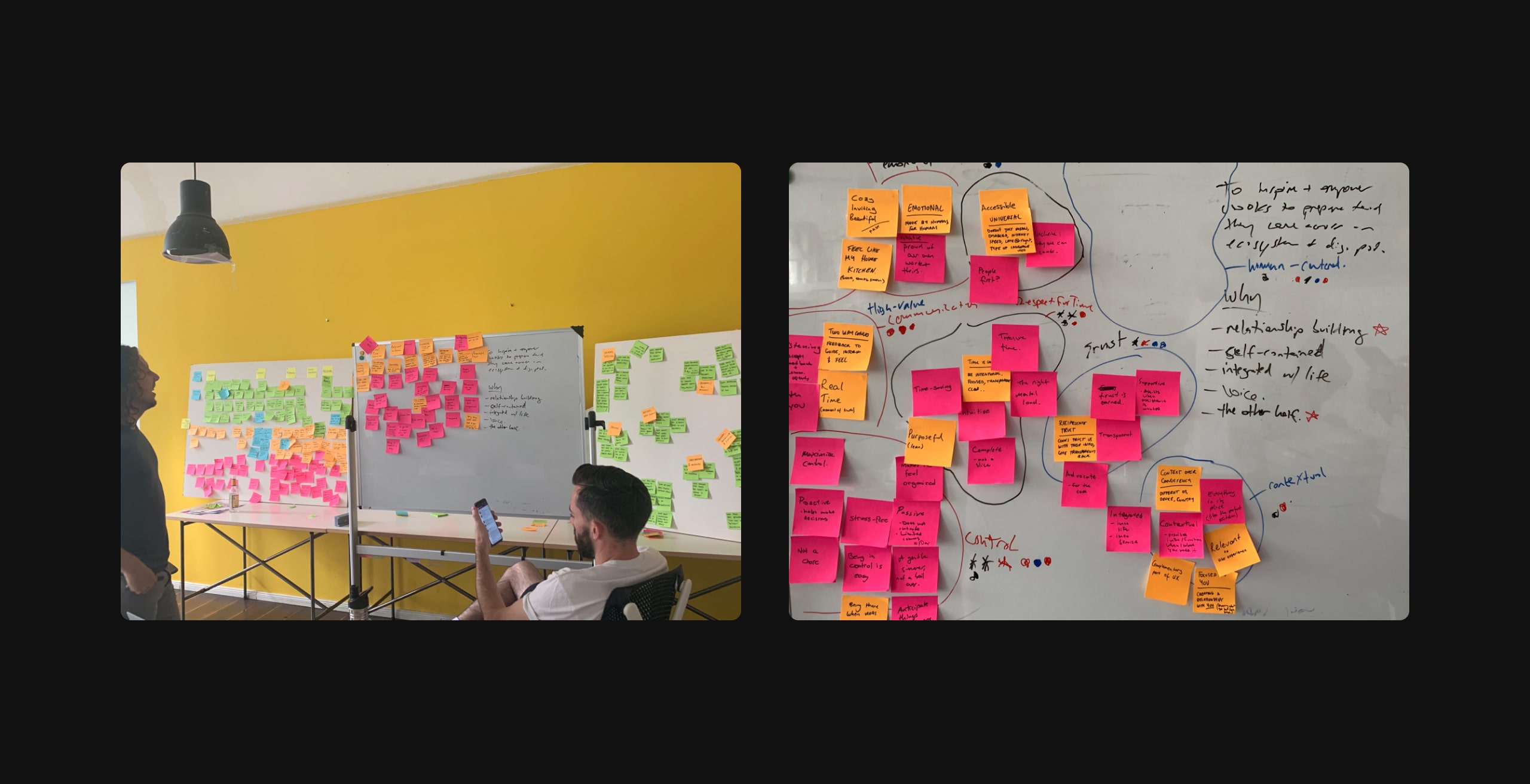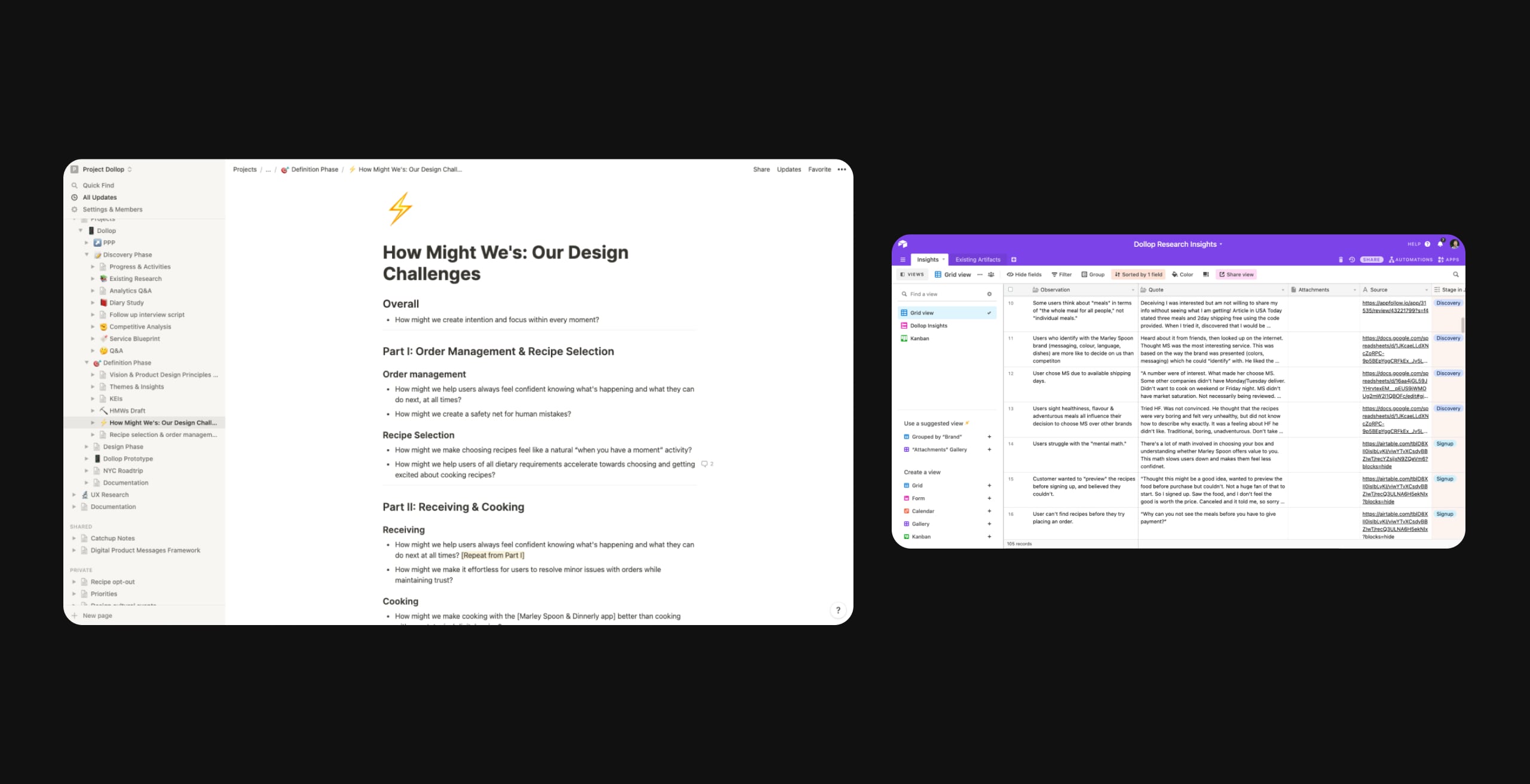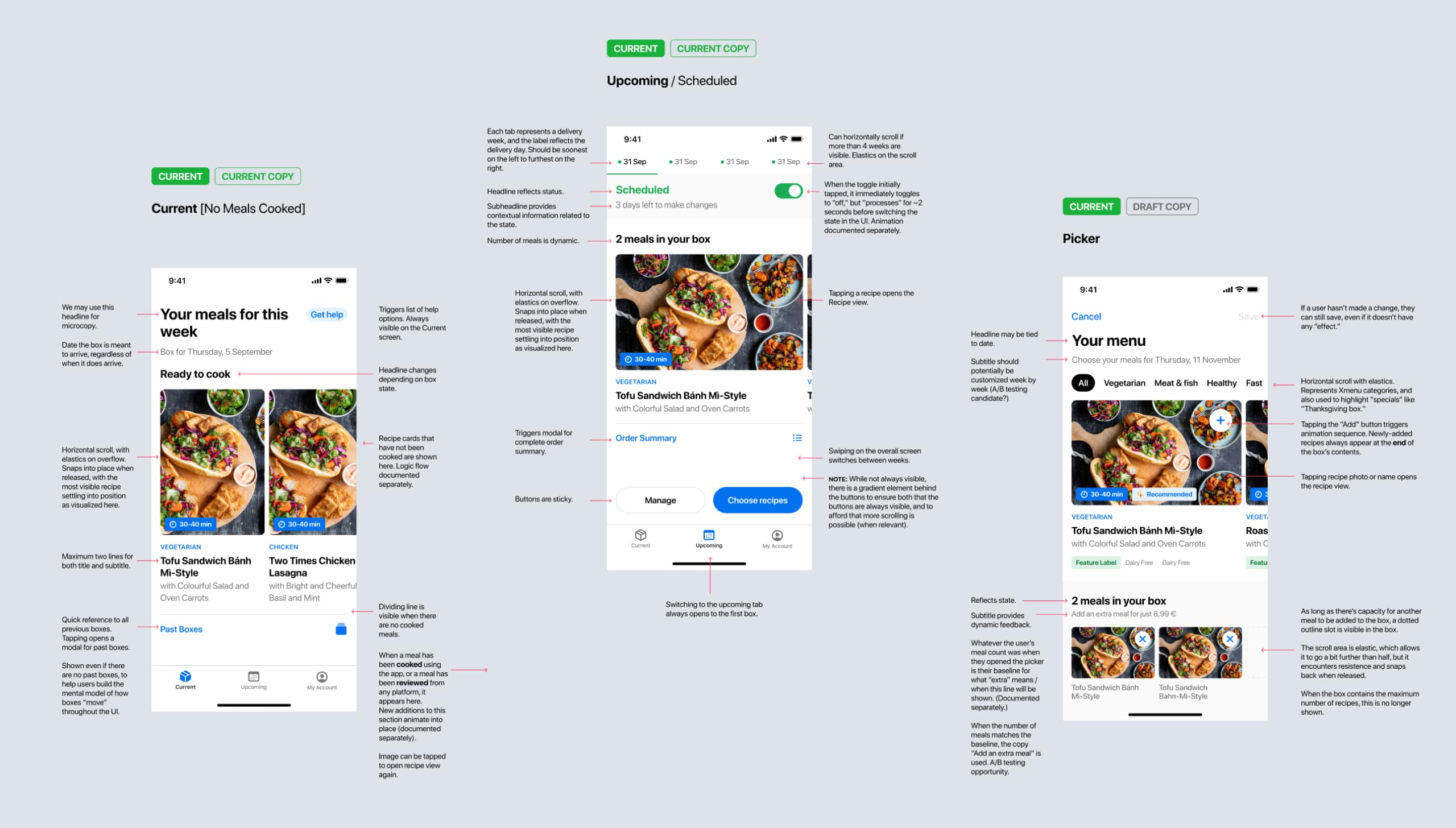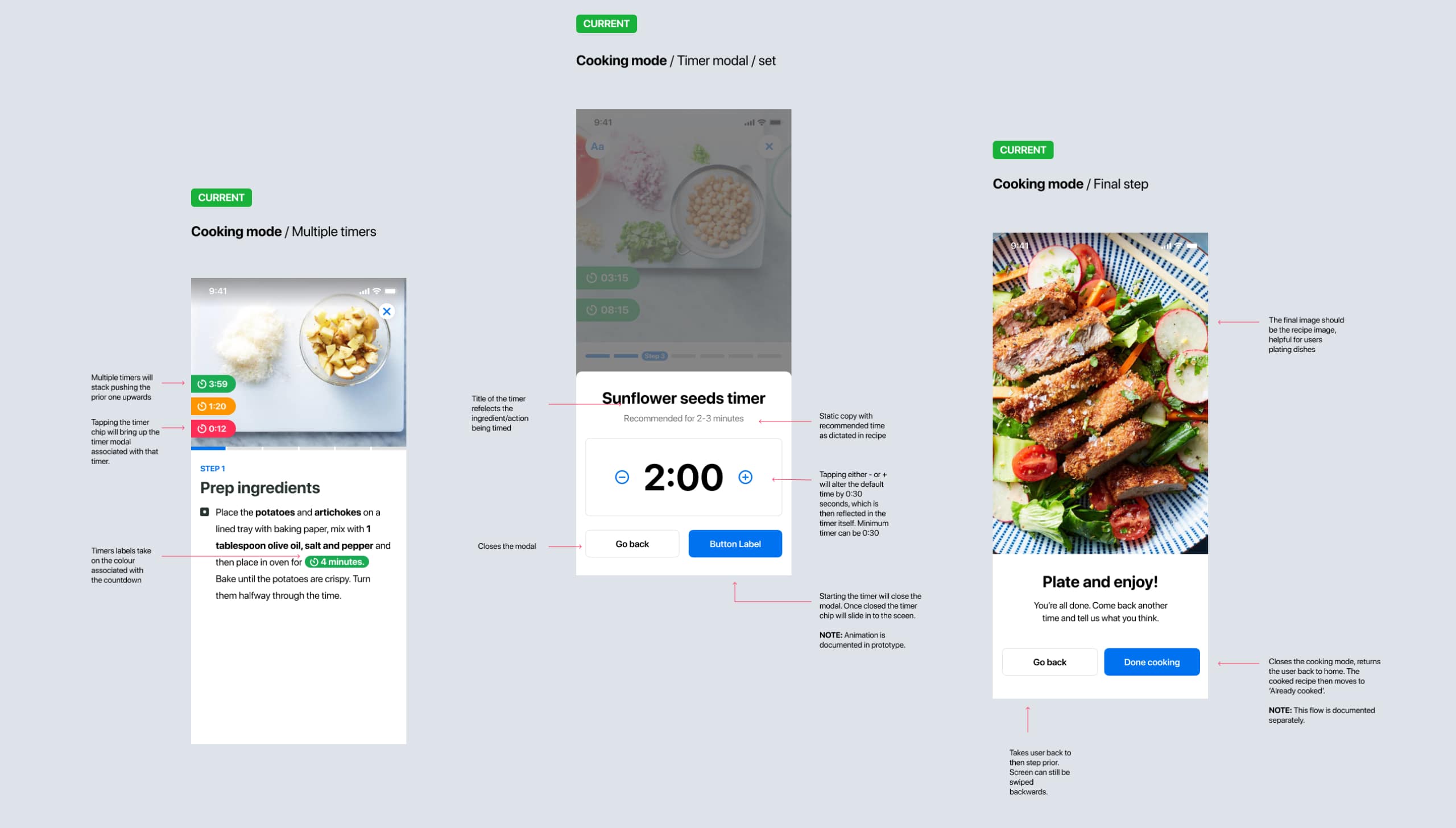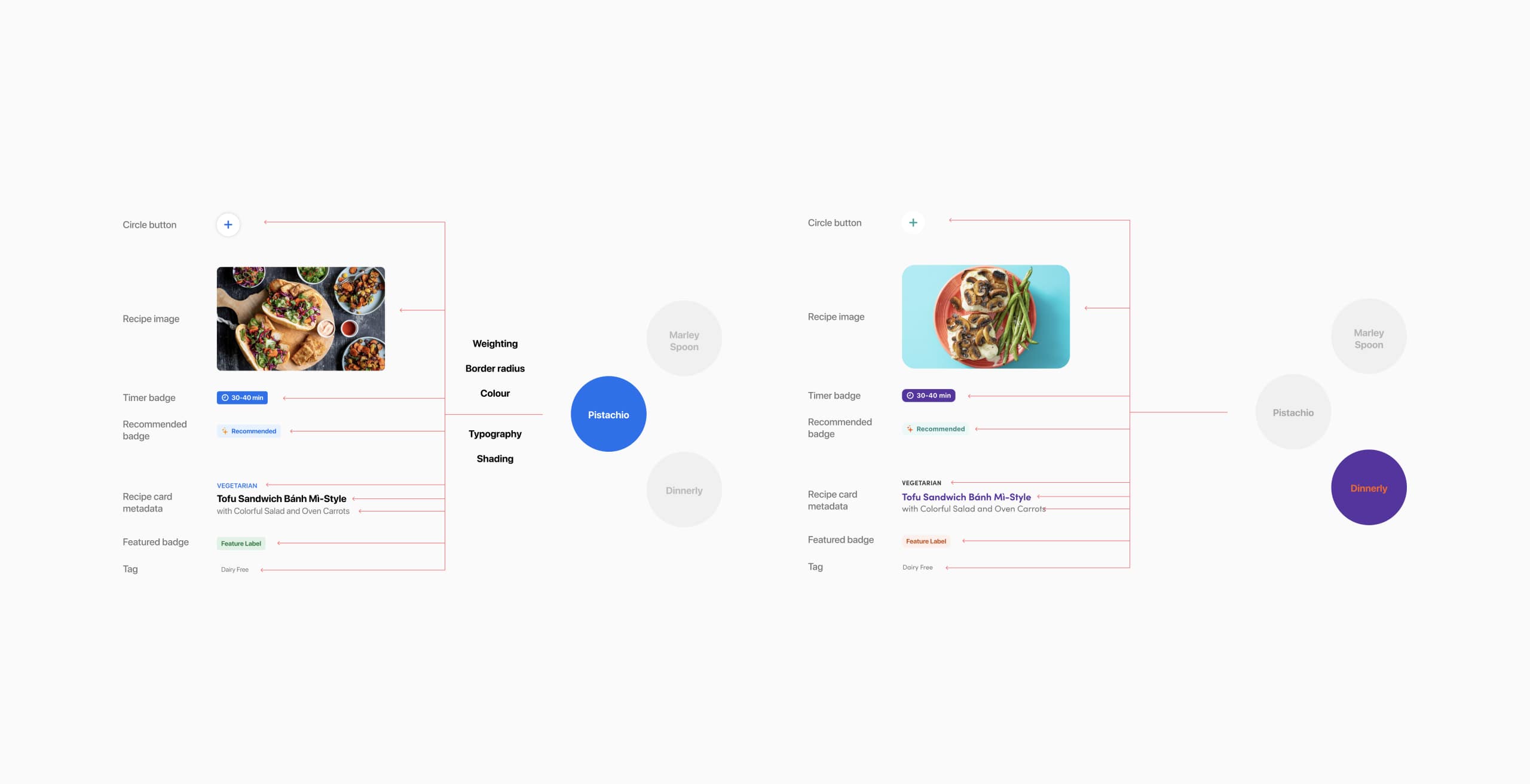Redefining the Marley Spoon App experience
Marley Spoon is one of the largest meal kit services operating in 8 different countries across the globe, with more than 30+ million meals to its global audience. Each week, Marley Spoon offers a selection of recipes that customers can choose from to cook. Over the past five years, Marley Spoon’s digital experience has evolved alongside its core product offering, however there was a huge opportunity to reimagine the mobile app to better deliver an end-to-end product experience that united the digital and physical halves of the meal kit experience. The outcome of our work was a brand new mobile app informed by research, built on modern technologies with scalability in mind as well as a newly formed cross-functional team that focuses on it’s iteration.
Client
Marley Spoon
Role
Product design, research, design systems, prototyping
Year
2019-2020
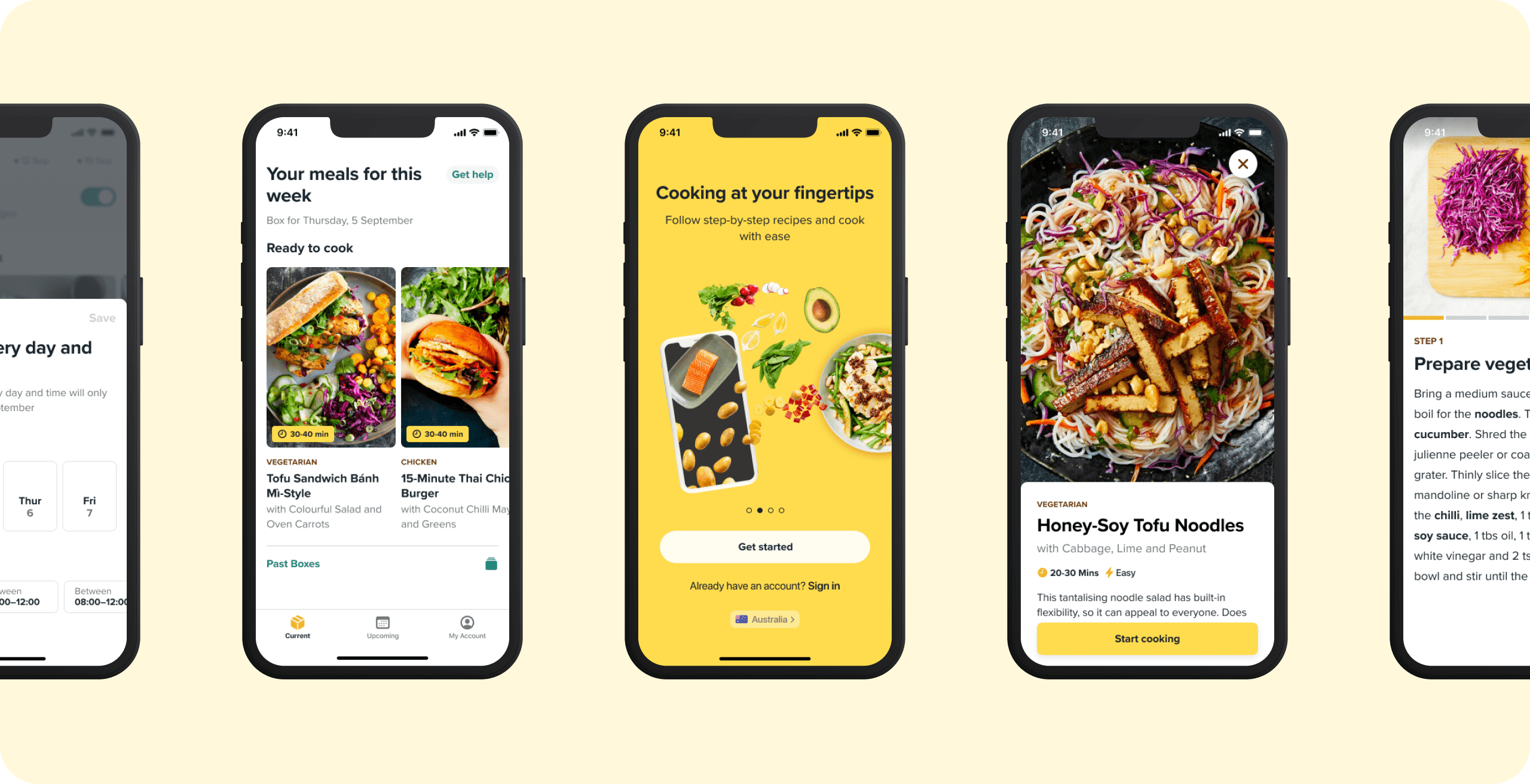
In collaboration with another product designer we drove this new project from discovery, definition through to execution. Our team consisted of two product designers, product leadership, a product manager and two engineers. In the past Marley Spoon had not had cross functional teams and this project was a test pilot for scrum, establishing a strong mix of skills brought from different parts of the company. In order to develop empathy for our customers, we began in discovery aiming to understand the current digital landscape of our app, the technology and current customer pains & gains. The entire team was brought into this process to align and help shape the project from the beginning. We looked at existing research, conducted a diary study with participants in the US, and formulated new product principles that would help guide our decision making and aligned us as a team. It was important that everyone was involved in the discovery process to rally around a common goal, enabling us to orient our mindset within the customer's shoes.
We split our design sprints into 3 phases: Order management & recipe selection, receiving & cooking and lastly signup & account management.
Naturally design doesn’t exist in a vacuum so we had to be conscious that the app experience is holistic and made sure we acknowledged the whole experience as we moved. Our goal in the design and ideation phase was to not only crafting UI but also validating the work through usability testing, ensuring as we moved, we were going in the right direction and focusing on the right problems. Our outcomes from design included a new design system, highly crafted UI screens with documentation for engineering and a high fidelity complex prototype used for testing and handing off interaction notes.
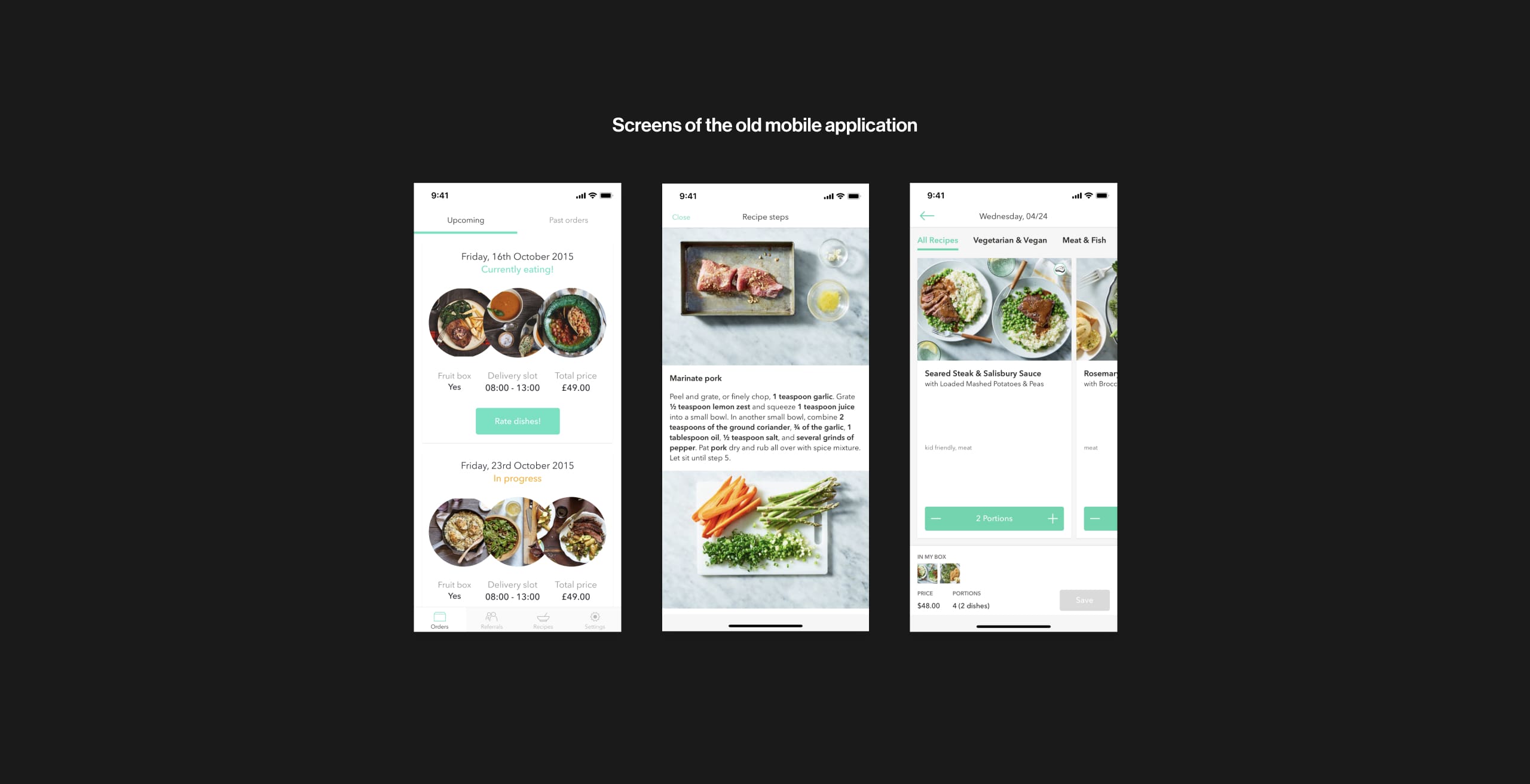
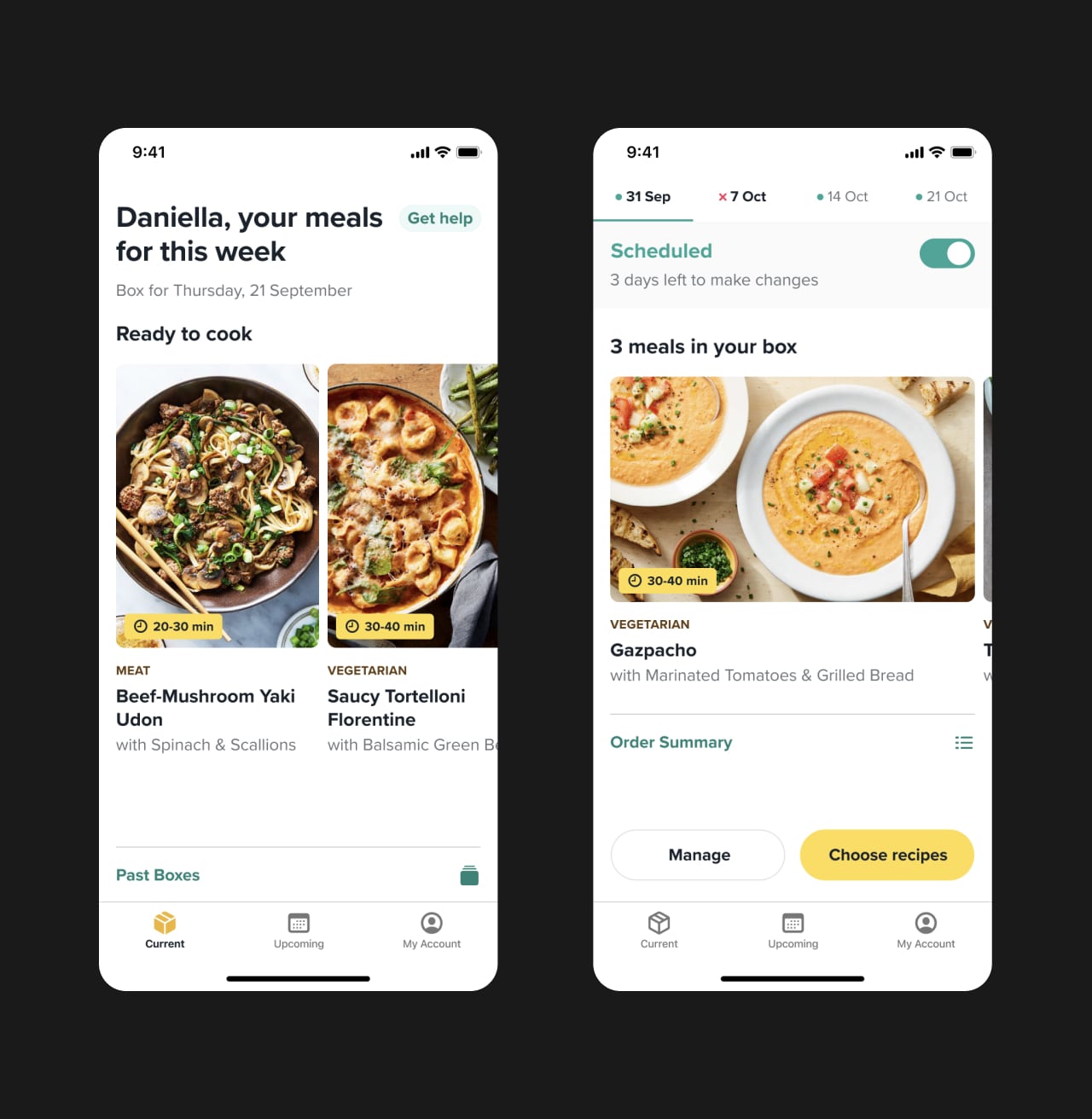
A more intuitive way of looking at boxes
The new current screen highlights what recipes are at a customers home. Imagery is larger to help customers get a feeling for what they want to cook when they open their app, ready to cook. We use natural language at the top of the screen to feel more human and quickly orient customers as to what they are looking at.
The updated upcoming boxes screen supports customers with the future meal planning and management. With a clearer visualization of the following weeks and their status, customers can look at their future orders with more clarity and see at a glance, all of the important pieces of information related to any box. We introduced a toggle which allowed customers to easily skip a box if they wished. By using slightly different UI, we aimed to create a distinct pattern that helped users remember where they are in the app.
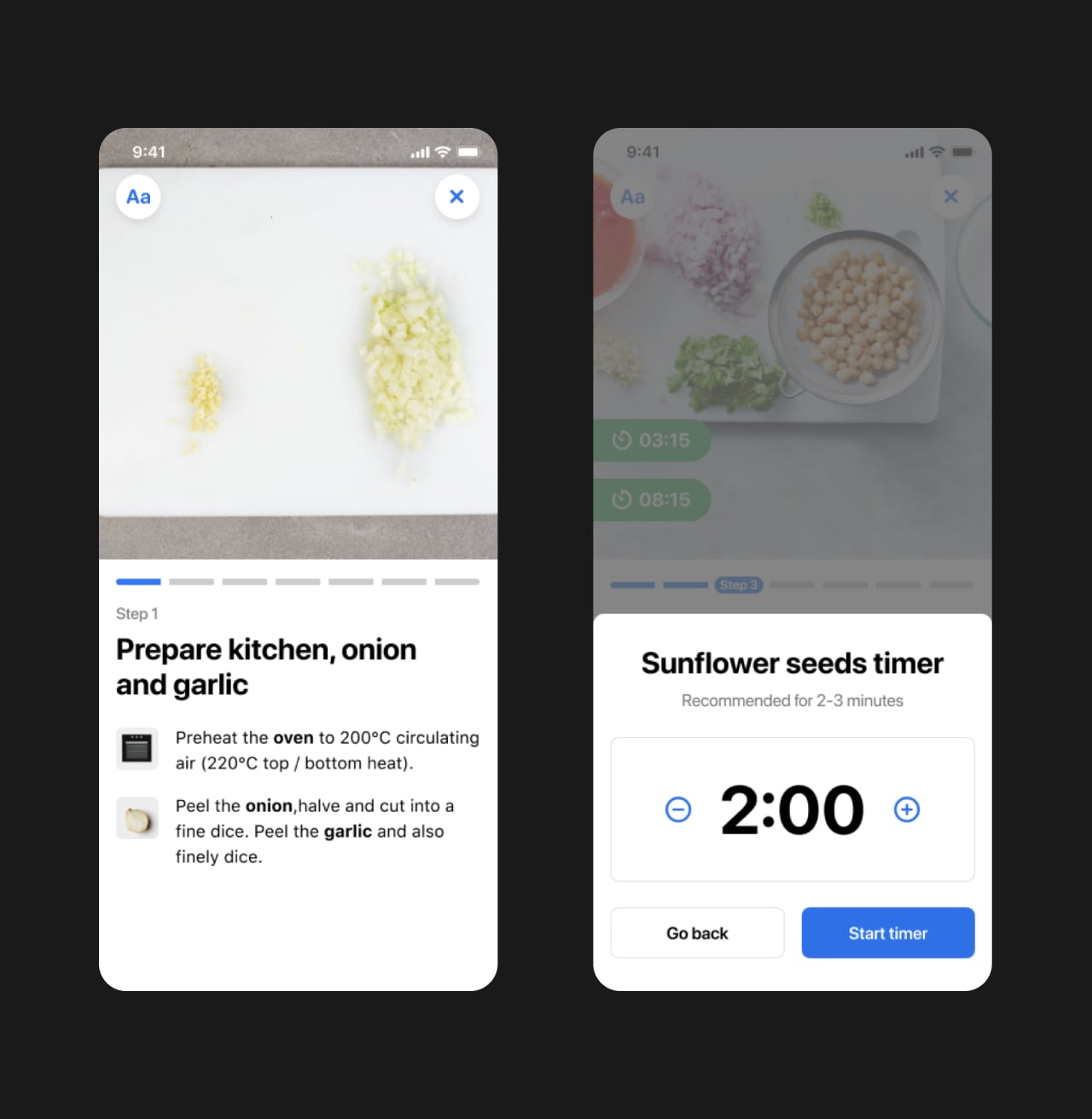
A kitchen friendly cooking experience
Customers get messy in the kitchen. They expect cooking Marley Spoon recipes to be easy and using the app should not get in the way of actually cooking. They tend to place their device on a counter top and struggle to clearly see the recipe details as they cook and manage the chaos in the kitchen.
We designed a brand new immersive cooking mode that was gesture driven and more visual. Customers can tap or swipe between steps, use integrated timers for specific recipe instructions and zoom into photos to get close to the detail. We also focused on improving readability of text and making imagery more visible than before.
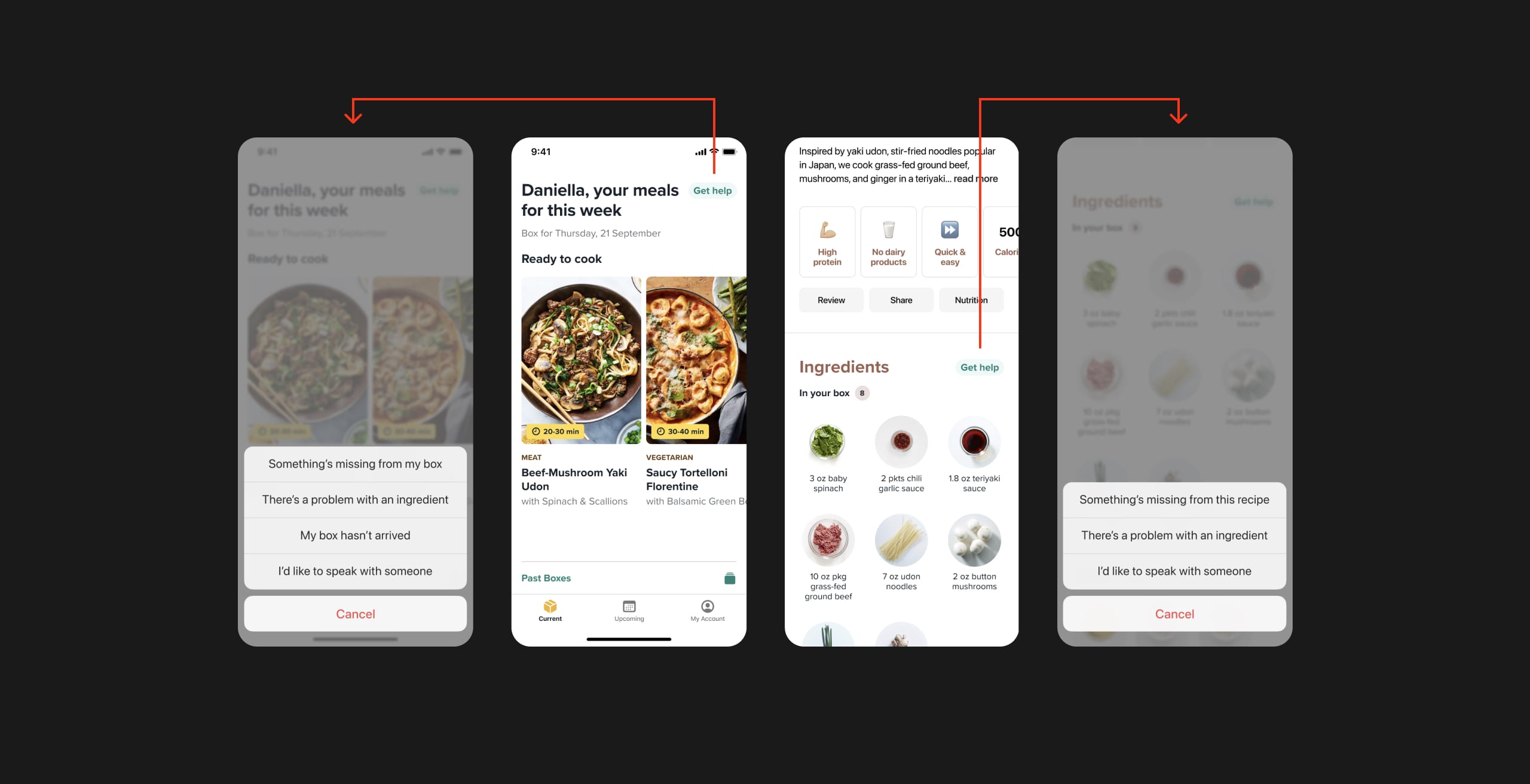

Supporting customers when accidents happen, wherever they happen
Customers often deal with damaged or missing ingredients, which causes a lot of frustration and leads to a range of different emotions. Common actions we see due to these problems include cancellation of their account, contacting Customer support (email, phone, chat) to get help & leaving negative reviews online.
From speaking to customers on this issue, we heard that they tend to notice missing ingredients when first unpacking their box or when preparing ingredients to cook one of their recipes. We also noticed that there were two common responses depending on ingredient type—A primary ingredient like chicken breast caused a large emotional response like frustration or a secondary ingredient like a sauce, which was easily dismissed unless it occurred frequently.
We created two easy entry points for help based on the moments customers tended to notice the problem—on the current box screen and on the recipe detail page in close proximity to ingredient listings. We designed a simple flow that allowed customers to select precisely which ingredient was missing from a specific recipe and report it to customer care without needing to go through any extra chat windows or emails.
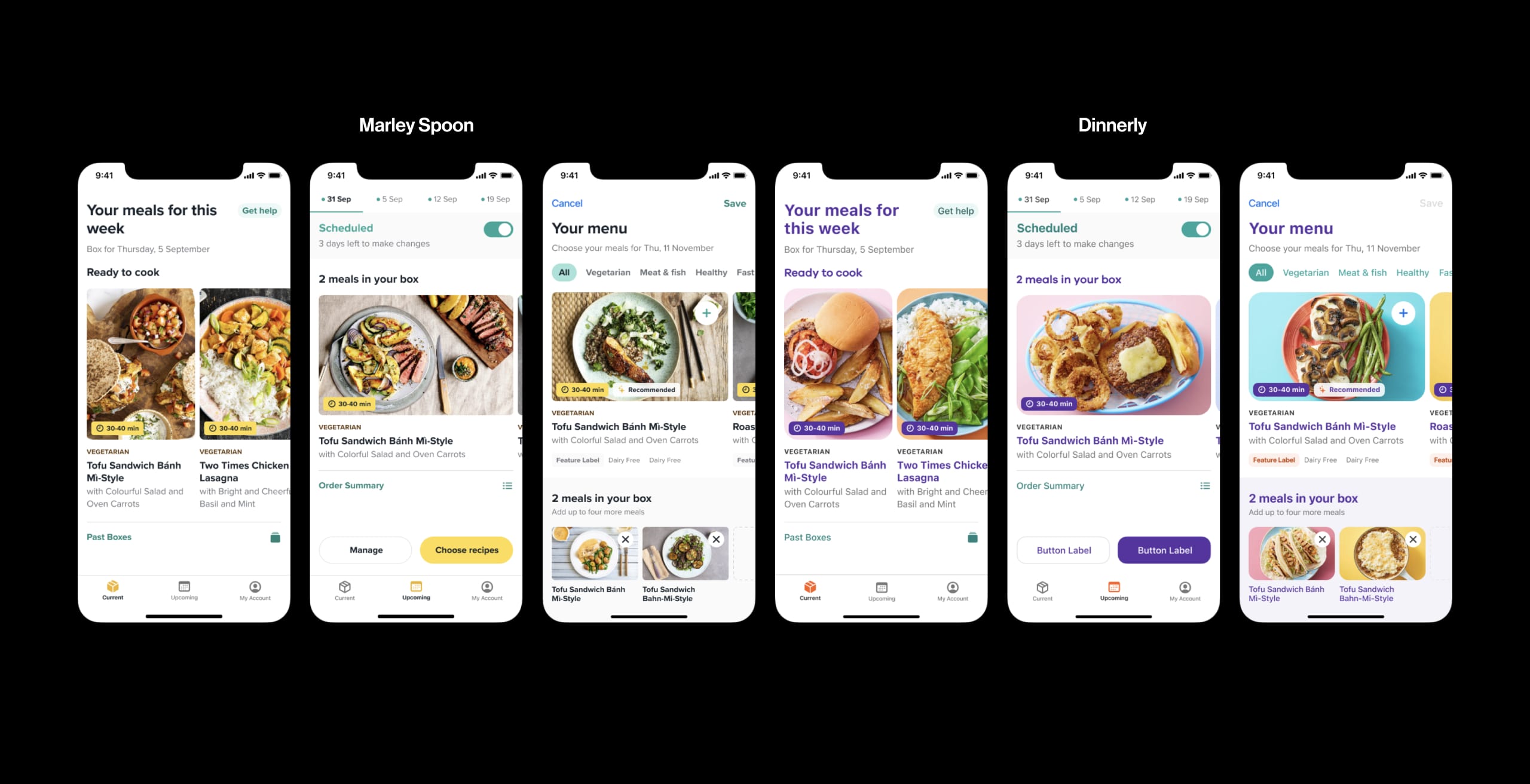
During each sprint, we would plan for testing based on the specific areas we felt we needed to validate. Going into this project there were a lot of assumptions, so it was super important that while we were moving forward in the design phase, we had to validate these to make sure we were moving in the right direction & understanding what customer were facing. Each week, we would put together a plan, script and setup equipment in our kitchen to interview participants and then let them cook a meal from Marley Spoon—all using our high-fidelity prototype based on real data. We conducted a mix of remote usability testing, in person testing & also cooking sessions. We opted for moderated sessions as it allowed us to have a more in depth conversation with our participants. We recruited a mix of loyal and new customers that fit our specific needs for each test.

